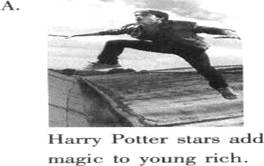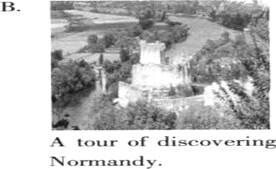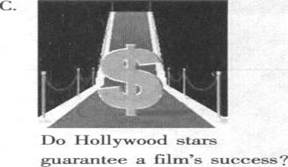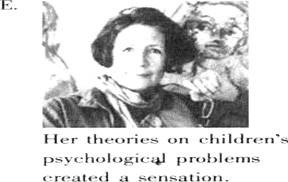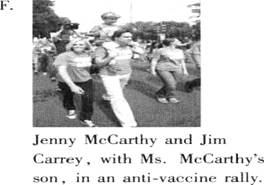题目内容
The vaccine(疫苗)was used to _______ the whole population _______ Bird Flu(禽流感).
keep; out of
protect; from
keep; away
make; out of
解析:
|
be used to表示“被用来”,protect…from“保护某人以免受到……的侵害”。 |

The koala, one of Australia’s most treasured creatures, is in trouble.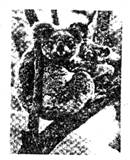
Affected by habitat (栖居地) loss and climate change, like many other uniquely Australian animals, koalas are being squeezed into smaller regions. But at present, it is a deadly disease, a somewhat silent killer that causes a further decline in the koala population, that is worrying many scientists about the fate of the koala.
The killer is Chlamydia, which has caused symptoms in up to 50 percent of the wild koalas, with probably even more infected (感染) but not showing symptoms. It has been particularly severe in Queensland, where nearly all koalas are infected. The disease causes many symptoms including eye infections, which can lead to blindness, making it difficult for them to find their primary food.
Treating Chlamydia in wild koalas is a challenge. There is no treatment available for it. Only a small percentage of the animals can be treated successfully and returned to the wild. Besides, there is no national plan in Australia to save the koala; it is up to each region to make management plans for its koala population.
The good news is that researchers are working to test a vaccine (疫苗) that would help prevent further spread. If all goes well, plans can be carried out to distribute the vaccine more widely. But it’s impossible to vaccinate (给注射疫苗) all wild koalas.
Another possibility would be to make vaccine distribution a routine part of treatment for the thousands of koalas brought into care centers every year after they are injured by cars or dogs.
While it is a combination of problems that are affecting the wild koala population, many experts believe this vaccine would be an important step in helping koalas survive longer. It may be enough time to give researchers a chance to solve some of the other problems facing Austalia’s koalas.
【小题1】Which isn’t considered the main cause of koala’s population decline?
| A.A deadly disease. |
| B.Injuries from cars and dogs. |
| C.Climate change. |
| D.Habitat loss. |
| A.the serious result Chlamydia has caused to the koala |
| B.Chlamydia affected the koala only in particular regions |
| C.the most serious symptom of Chlamydia is eye infections |
| D.Chlamydia can seriously affect koala’s primary food |
| A.would cure the killer Chlamydia quite effectively |
| B.would only be distributed in koala care centers |
| C.has already been put into practical use in Australia |
| D.cannot be distributed to all the infected koalas |
| A.a national plan for saving koalas will be made soon in Australia |
| B.koala population is declining only in a few regions |
| C.researchers need enough time to solve the koala problems |
| D.experts have lost the best chance to save the infected koalas |
An Australian man who has been donating his extremely rare kind of blood for 56 years has saved the lives of more than two million babies.
James Harrison has an antibody in his plasma that stops babies dying from Rhesus disease, a form of severe anaemia. He has enabled countless mothers to give birth to healthy babies, including his own daughter, Tracey, who had a healthy son thanks to her father's blood.
Mr. Harrison has been giving blood every few weeks since he was 18 years old and has now racked up a total of 984 donations. When he started donating, his blood was deemed so special that his life was insured for one million Australian dollars.
He was also nicknamed the “man with the golden arm” or the “man in two million”. He said: “I've never thought about stopping. Never.” He made a pledge to be a donor aged 14 after undergoing major chest surgery in which he needed 13 litres of blood. “I was in hospital for three months,” he said. “The blood I received saved my life so I made a pledge to give blood when I was 18.”
Just after he started donating he was found to have the rare and life-saving antibody in his blood. At the time, thousands of babies in Australia were dying each year of Rhesus disease. Other newborns suffered permanent brain damage because of the condition. The disease creates an incompatibility between the mother's blood and her unborn baby's blood. It stems from one having Rh-positive blood and the other Rh-negative.
His blood has since led to the development of a vaccine called Anti-D. After his blood type was discovered, Mr. Harrison volunteered to undergo a series of tests to help develop the Anti-D vaccine. “They insured me for a million dollars so I knew my wife Barbara would be taken care of,” he said. “I wasn't scared. I was glad to help. I had to sign every form going and basically sign my life away.”
Mr. Harrison is Rh-negative and was given injections of Rh-positive blood. It was found his plasma could treat the condition and since then it has been given to hundreds of thousands of women. It has also been given to babies after they are born to stop them developing the disease.
It is estimated he has helped save 2.2 million babies so far. Mr. Harrison is still donating every few weeks now.
1.How old is James Harrison?
|
A.56 |
B.70 |
C.74 |
D.78 |
2.What does the underlined phrase “two million” refer to?
|
A.babies |
B.mothers |
C.dollars |
D.all of the above |
3. Why did James decide to donate his blood? Because _____.
|
A.his daughter asked him to help her son |
|
B.he has a golden arm worth a million dollars |
|
C.a vaccine called Anti-D is to be developed |
|
D.someone else’s blood saved his life |
4.The sentence “The disease creates an incompatibility between the mother's blood and her unborn baby's blood” (underlined in Paragraph 5) suggests that _____.
|
A.babies suffer permanent brain damage before born |
|
B.the mother and the baby have different types of blood |
|
C.Rhesus disease contributes to permanent brain damage |
|
D.all the patients have a rare antibody in their blood |
5. What can we infer from the sixth paragraph?
|
A.Some of the tests to develop the vaccine are dangerous. |
|
B.His wife Barbara needed to be taken care of badly then. |
|
C.Mr. Harrison was glad to help develop a new vaccine. |
|
D.His blood type was accidentally discovered after tests. |
